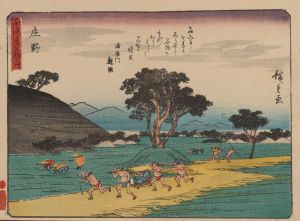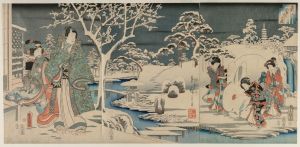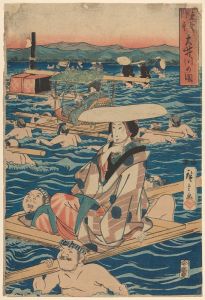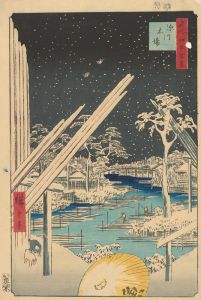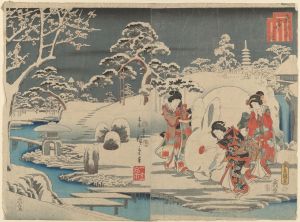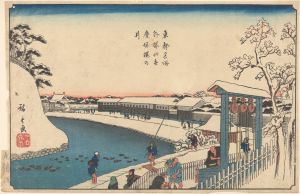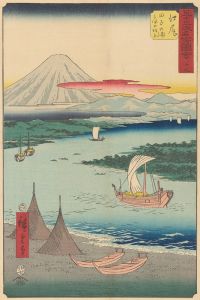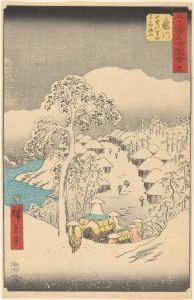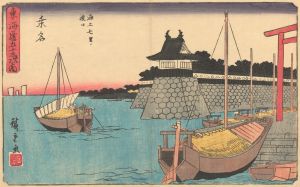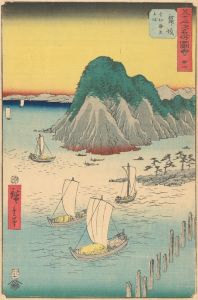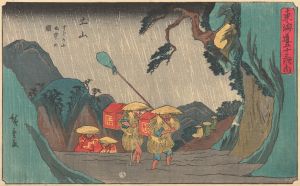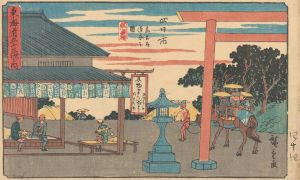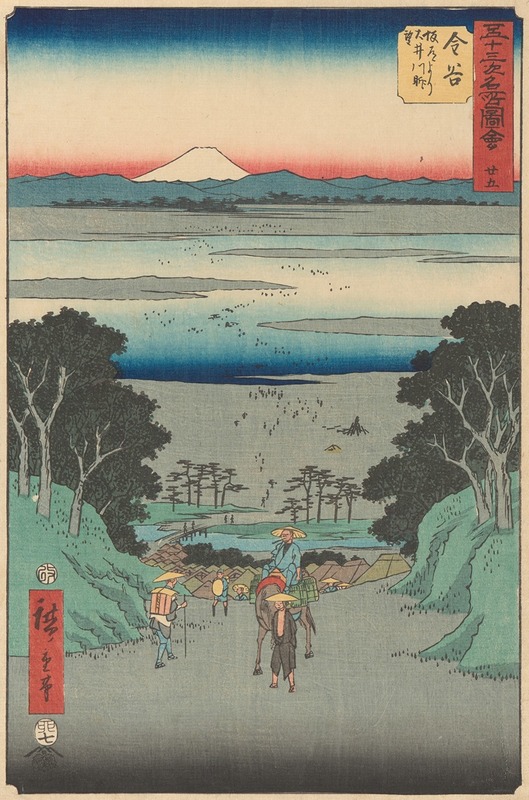
Kanaya
A hand-painted replica of Andō Hiroshige’s masterpiece Kanaya, meticulously crafted by professional artists to capture the true essence of the original. Each piece is created with museum-quality canvas and rare mineral pigments, carefully painted by experienced artists with delicate brushstrokes and rich, layered colors to perfectly recreate the texture of the original artwork. Unlike machine-printed reproductions, this hand-painted version brings the painting to life, infused with the artist’s emotions and skill in every stroke. Whether for personal collection or home decoration, it instantly elevates the artistic atmosphere of any space.
"Kanaya" is a woodblock print by the renowned Japanese ukiyo-e artist Andō Hiroshige, part of his celebrated series "The Fifty-three Stations of the Tōkaidō" (Tōkaidō Gojūsan-tsugi), which was first published in the 1830s. This series is one of Hiroshige's most famous works and depicts the various stations along the Tōkaidō, the main road connecting Edo (modern-day Tokyo) with Kyoto during the Edo period in Japan.
Hiroshige's "Kanaya" print captures the Kanaya-juku, the 24th station on the Tōkaidō. This station was located near the Ōi River, which travelers had to cross. Unlike many other rivers in Japan, the Ōi River did not have a bridge during the Edo period, making the crossing a significant and sometimes perilous part of the journey. Travelers often had to be ferried across by porters, adding an element of adventure and uncertainty to their travels.
In the "Kanaya" print, Hiroshige illustrates this crossing with his characteristic attention to detail and composition. The scene typically features travelers being carried across the river by porters, with the distant landscape providing a backdrop that includes mountains and the vast sky. Hiroshige's use of color and perspective in this print exemplifies his ability to convey both the beauty and the challenges of travel in Edo-period Japan.
Hiroshige's work is noted for its innovative use of perspective and his ability to capture the transient beauty of the natural world. In "Kanaya," as in many of his prints, he employs a bird’s-eye view, allowing viewers to appreciate the expanse of the river and the surrounding landscape. This perspective not only highlights the physical challenge of crossing the river but also emphasizes the harmonious relationship between humans and nature, a recurring theme in Hiroshige's work.
"The Fifty-three Stations of the Tōkaidō" series was highly popular in its time and remains influential today, offering insights into the culture and society of Edo-period Japan. Hiroshige's prints were not only artistic achievements but also served as a form of travel literature, providing a visual record of the journey along the Tōkaidō. The series contributed to the popularization of landscape art in Japan and influenced many Western artists, including the Impressionists, who admired Hiroshige's composition and use of color.
Hiroshige's "Kanaya" print, like the rest of the series, is a testament to his skill in capturing the essence of a place and moment in time. His ability to depict the interplay between human activity and the natural environment continues to resonate with audiences, making his work timeless. The "Kanaya" print remains a significant piece within Hiroshige's oeuvre, celebrated for its artistic merit and its role in documenting the historical Tōkaidō route.





